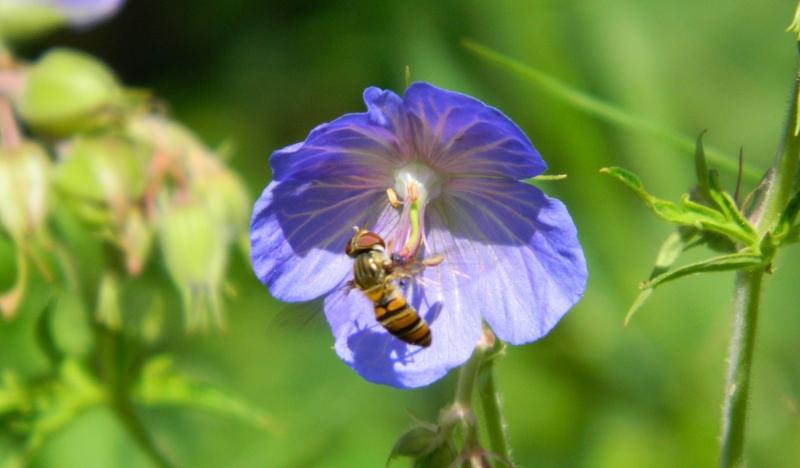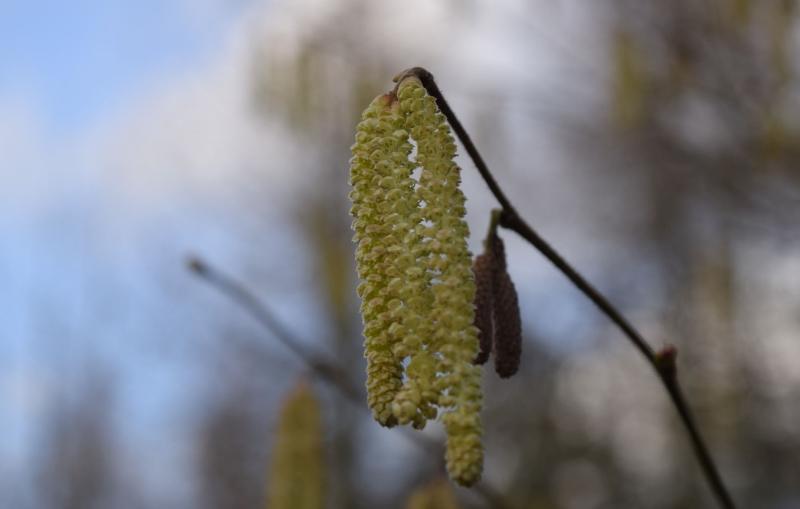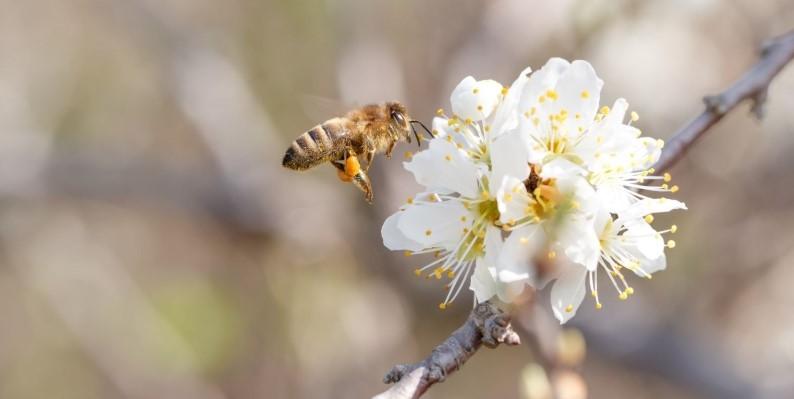
Pollination in the Forest
Pollination is one of the most important ecosystem functions, essential for horticultural and agricultural production, in addition to sustaining wild populations of flowering plants. Forestry intern Ben looks at the important role the Forest plays in pollination.
What are pollinators?
A pollinator is an animal that fertilises seeds. The classic example you might be thinking of is the humble bumble bee, but it includes many species of insects, birds and mammals, including butterflies, beetles, wasps, bats and hoverflies.
There are multiple means by which a flowering plant can be pollinated. Some, like alder and willow, spread their pollen by wind (anemophilous – wind loving) and others use insects as their mediators (entomophilous – insect loving). A much less common form of pollination is by water (hydrophilous – water loving) which only accounts for around 2% of pollination.
So, all pollinators rely on pollen and nectar to at least some extent, but not all flowering plants require pollinating species for reproduction.
What are pollen and nectar?
Pollen is a protein-rich substance produced by seed plants that contains male DNA (in the form of gametes, or reproductive cells) in a protective outer coating. This outer coating is so tough that pollen grains can last for thousands of years in the soil.
The science of palynology can even use them to figure out what a landscape would have looked like in the past, based upon the plant species that were present and where they are in the soil profile.
Nectar is a tasty sugary fluid that is produced in flowers to encourage animals to visit and collect or deposit pollen. The pollen can then be transferred to another flower and reproduction then continues if conditions are favourable.
Some pollinators eat nectar, some eat pollen and some eat both. Honeybees rely on nectar as their primary food source, with pollen being eaten by bees in certain roles, or at certain points in their life cycle. It might help to think of pollen as being a healthy, protein-rich meal, and nectar as a packet of donuts!

Pollinators and plant reproduction
Pollinators are essential because they help to produce the nuts and fruits that form an important component of our diets. Around 1400 plants are grown across the world as crops, and almost 80% require pollination by animals. Pollinators also facilitate the reproduction of the majority of plant species across the world.
No pollinators means no reproduction which in turn would result in the collapse of ecosystems. Without flowering plants like trees it would be impossible for ecosystems to perform two vital services; air quality/carbon cycling and soil creation and protection. It is not an exaggeration to say that pollinators are some of the most important organisms on Earth.
Pollinators in decline
Unfortunately, our pollinators are in trouble. You will almost certainly be familiar with the plight of the honey bee which is suffering from colony collapse. In the past 50 years, half of the bee, moth and butterfly species recorded in the 2013 State of Nature Report have experienced population declines. A third of British hoverflies and wild bees are in decline, and three bumblebee species have been declared extinct in the last decade.
Many of the pollinator species that are declining are specialists, whereas those which are thriving are generalists. Specialists are animals that have evolved to exist in a very specific niche, like the brimstone butterfly, the larvae of which only feeds on buckthorn and alder buckthorn.
Generalists include animals like honeybees, which can survive on a wider range of food resources and in a wide range of environments.
Because of this, biodiversity is being lost, and subsequently ecosystems are becoming less resilient. We face a future where we are reliant on a much smaller range of species for pollination, with our proverbial eggs in far fewer baskets.
Pollination in the Heart of England Forest
Our thriving, diverse Forest is an ecological sanctuary for many species. Here at the Heart of England Forest we undertake management activities specifically designed to produce a wide range of habitats. For example, you may notice that some of our rides and pathways have ‘wavy’ edges. This is called scalloping, and we do it because the undulations in the verge create specific micro climates as the day progresses. Some species like butterflies have quite specific preferences for habitats, and ensuring they have the correct environment is important.
Unlike in commercial forestry plantations, we plant our trees in specific zones based upon their natural ecological niches. Shrubs line the woodland fringe, followed by ‘edge’ trees and then the primary ‘high’ forest trees such as oak. This creates a sloping interface that produces yet more habitat variation.
Finally, if you have walked in our woods in the spring and summer you will no doubt have experienced a wealth of flowers, both in the canopy and on the ground. Our diverse range of thirty native tree and shrub species cater to the needs of countless animals and insects as sources of food and shelter.
One of the driving forces behind the decline in pollinator populations is the intensification of farming practices that remove existing habitats and resources. As the Heart of England Forest acquires land and afforests it, we create yet more space for pollinators – and indeed all our native species – to survive and thrive.
Pollinator-friendly trees and shrubs in the Forest
Along with the wildflower-rich grasslands in the Forest, many of our trees and shrubs are beneficial for pollinators.
Common alder (Alnus glutinosa)
Flowers: February to April

This water-loving tree can be found in swampy areas and alongside watercourses throughout the Heart of England Forest. Identified by its characteristic indented leaves and tiny dark brown cones, this tenacious tree is a valuable early source of pollen for pollinators. Alder is actually wind-pollinated, so the relationship between the tree and pollinators is a bit one-sided. Still, it provides pollen and nectar to bees in the early period when food sources are limited.
Fact: Alder grows in association with a bacterium called Frankia alni which allows it to grow in poor quality soils by fixing nitrogen in the soil.
Hazel (Coryllus avellana)
Flowers: Mid-February onwards

A charismatic mainstay of hedges and woodland understoreys, hazel is a tree of many talents in addition to producing delicious nuts. Like alder, it provides a valuable source of early pollen to pollinators. Hazel has both male and female flowers on the same tree (monoecious) and the long ‘lambs-tails’ catkins that you will be familiar with are the male flowers. The female flowers are much more subdued, with tiny red protrusions.
Fact: Hazel grows very well as a coppice tree, where it is cut back every few years and allowed to regrow as multiple stems. These stems are used in a variety of traditional crafts.
Blackthorn (Prunus spinosa)
Flowers: March onwards

Another mainstay of hedgerows in the Forest. Do not let its prickly nature fool you, the blackthorn is a valuable plant for wildlife including many pollinators. You may already know that the rare brown-hairstreak butterfly lays its eggs exclusively on the branches of blackthorn. The flowers of the blackthorn are hermaphroditic, which means that the male and female reproductive parts are found in a single flower.
How you can help pollinators
You can join the fight to protect our pollinators by sowing native wildflowers in your garden, letting your grass grow long and tolerating ‘weeds’ like dandelions. You can also build bug hotels and create habitats for solitary bees. These are all relatively easy and sometimes involve doing less gardening!
Supporting our work enhancing the biodiversity of our woodland habitats by making a regular donation is another way you can help. Find out about becoming a Friend of the Forest.



